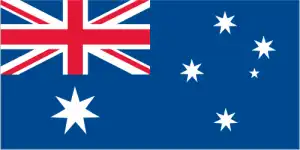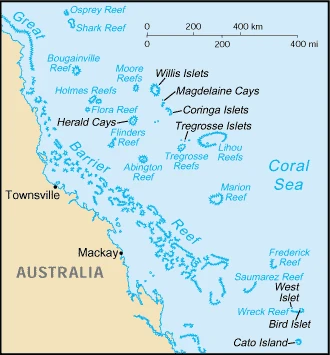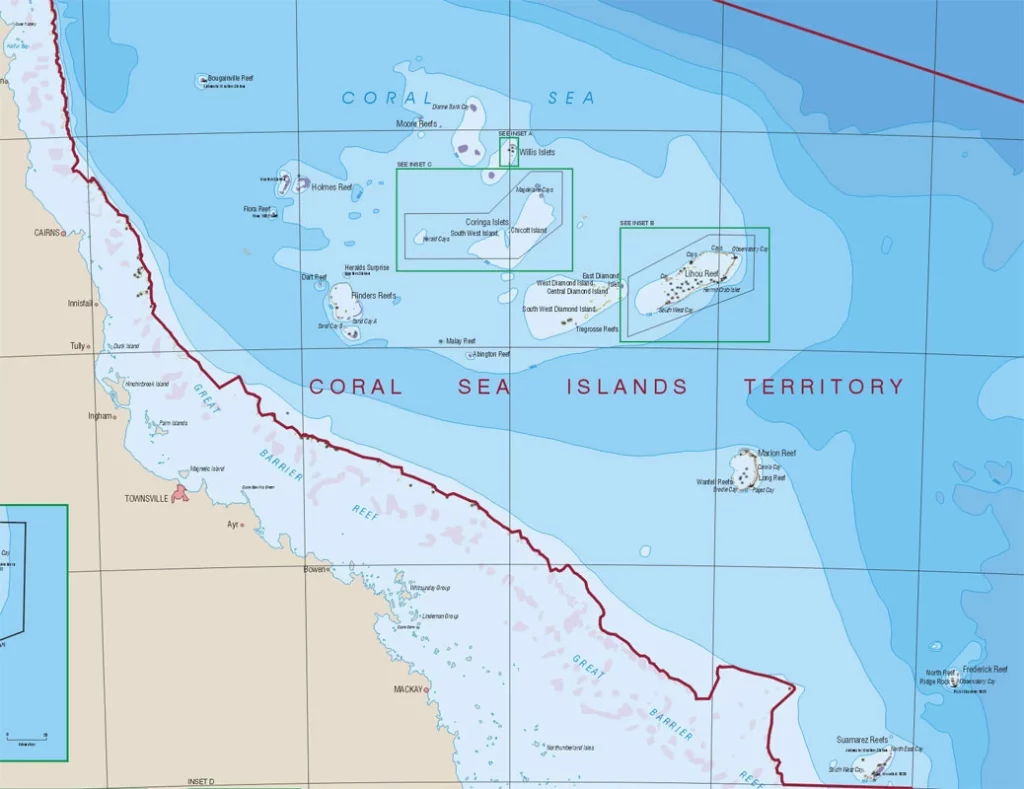Coral Sea Islands Google Maps is a site/tool that offers a wide range of map views (topographic, satellite, street view) and navigation options, with little effort on your part, yet efficiently. If you need to plan a trip to a new place like Coral Sea Islands, Google maps are available on desktop, mobile, or tablet. This Google maps and information page is dedicated to Coral Sea Islands, Oceania (27 countries), showing its location, country facts, details about its capital city, bordering countries, and plenty of other information which may be interesting when you visit this Oceanian state.
Quick links: Google Maps Coral Sea Islands, N/A Google maps, Driving Directions Coral Sea Islands, Printable Road Map.
About Coral Sea Islands in a nutshell

- Conventional short form of the name: Coral Sea Islands
- The conventional long form of the name: Coral Sea Islands Territory
- Etymology: self-descriptive name to reflect the islands position in the Coral Sea off the northeastern coast of Australia.
- The legal system in Coral Sea Islands: the common law legal system of Australia applies where applicable.
- Climate: Tropical.
- The national symbols are none.
- Internet TLD: none.
Background
The widely scattered islands were first charted in 1803, but they were too small to host any permanent human habitation. The 1870s and 1880s saw attempts at guano mining, but these were soon abandoned. The islands became an Australian territory in 1969, and their boundaries were extended in 1997. A small meteorological staff has operated on the Willis Islets since 1921, and several other islands host unmanned weather stations, beacons, and lighthouses. Much of the territory lies within marine national nature reserves. Costa Rica Although explored by the Spanish early in the 16th century, initial attempts at colonizing Costa Rica proved unsuccessful due to a combination of factors, including disease from mosquito-infested swamps, brutal heat, resistance by natives, and pirate raids.
It was not until 1563 that a permanent settlement of Cartago was established in the cooler, fertile central highlands. The area remained a colony for some two and a half centuries. In 1821, Costa Rica became one of several Central American provinces that jointly declared their independence from Spain. Two years later, it joined the United Provinces of Central America, but this federation disintegrated in 1838, at which time Costa Rica proclaimed its sovereignty and independence. Since the late 19th century, only two brief periods of violence have marred the country’s democratic development. On 1 December 1948, Costa Rica dissolved its armed forces. Although it still maintains a large agricultural sector, Costa Rica has expanded its economy to include robust technology and tourism industries. The standard of living is relatively high. Land ownership is widespread.
Geography

Coral Sea Islands are a chain of over 1200 islands and reefs of Queensland, Australia. The two largest islands in the Coral Sea Islands chain are North and South Molucca, which make up one of the world’s largest atolls.
This state is located in Oceania, islands in the Coral Sea, northeast of Australia, under the coordinates of 18 00 S, 152 00 E, covering an area of 3 sq km less than with a coastline of 3,095 km. Coral Sea Islands is About four times the size of the national mall in Washington, DC.
Sand and coral reefs and islands (cays), with Unnamed location on Cato island 9 m as the highest point of Coral Sea Islands, while Pacific Ocean 0 m as the lowest point, causing a mean elevation at N/A throughout the country. With a total of 3 sq km less than, Coral Sea Islands has 3 sq km less than land and 0 sq km water surface area.
Important nesting area for birds and turtles.
The climate in Coral Sea Islands is as follows: Tropical.
When you visit Coral Sea Islands, the natural hazards are occasional tropical cyclones.
The following major health-threatening issues shall be considered when visiting Coral Sea Islands: none.
Current environmental issues affecting the people: no permanent freshwater resources; damaging activities include coral mining, destructive fishing practices (overfishing, blast fishing).
Google Maps Coral Sea Islands
The capital and other divisions
The Coral Sea Islands are under the protection of the Australian government and belong to Australia. They also happen to be home to one of the most important marine sanctuaries on earth – the Great Barrier Reef.
Administrative divisions: none.
People and society
The population in Coral Sea Islands is no indigenous inhabitants (July 2021 estimate). Note: there is four staff at the meteorological station on Willis Island.
Industry
No economic activity.
Coral Sea Islands are rich in the following natural resources: Fish.
The main industrial sectors are typically none.
Land use in Coral Sea Islands: none of the forest, 100% (2018 estimate) other.
The arable land area is 0 sq km, and the agricultural land is 0% (2018 estimate).
Coral Sea Islands Driving Directions
Are you interested in visiting Coral Sea Islands and looking for driving directions? Click here to plan your route, or see a printable road map of Coral Sea Islands below for an overview of the route network.
Printable map of Coral Sea Islands
Did you know about Coral Sea Islands?
The Coral Sea Islands, a group of about 125 low-lying islands with a combined area of about 0.2 sq km (0.0764 sq mi), are one of the world’s most isolated territories. They are an external territory of Australia and form part of its external territorial zone, so they come under Australian law and Australian federal jurisdiction.
After virtually visiting Coral Sea Islands, you may also be interested in the neighboring countries: none.
If you liked our Google map and Coral Sea Islands information page,
please share it with others or save the link https://www.drivingdirections.net in your bookmarks.

